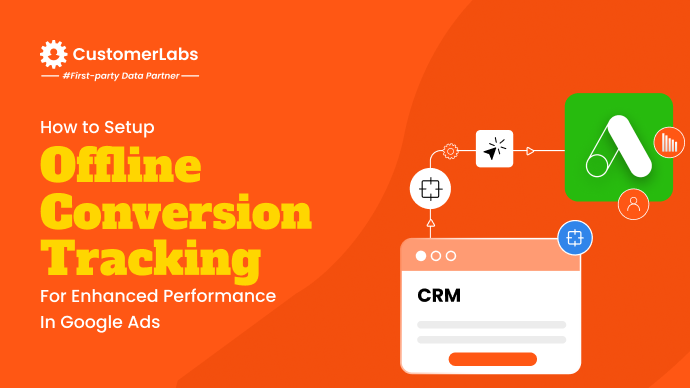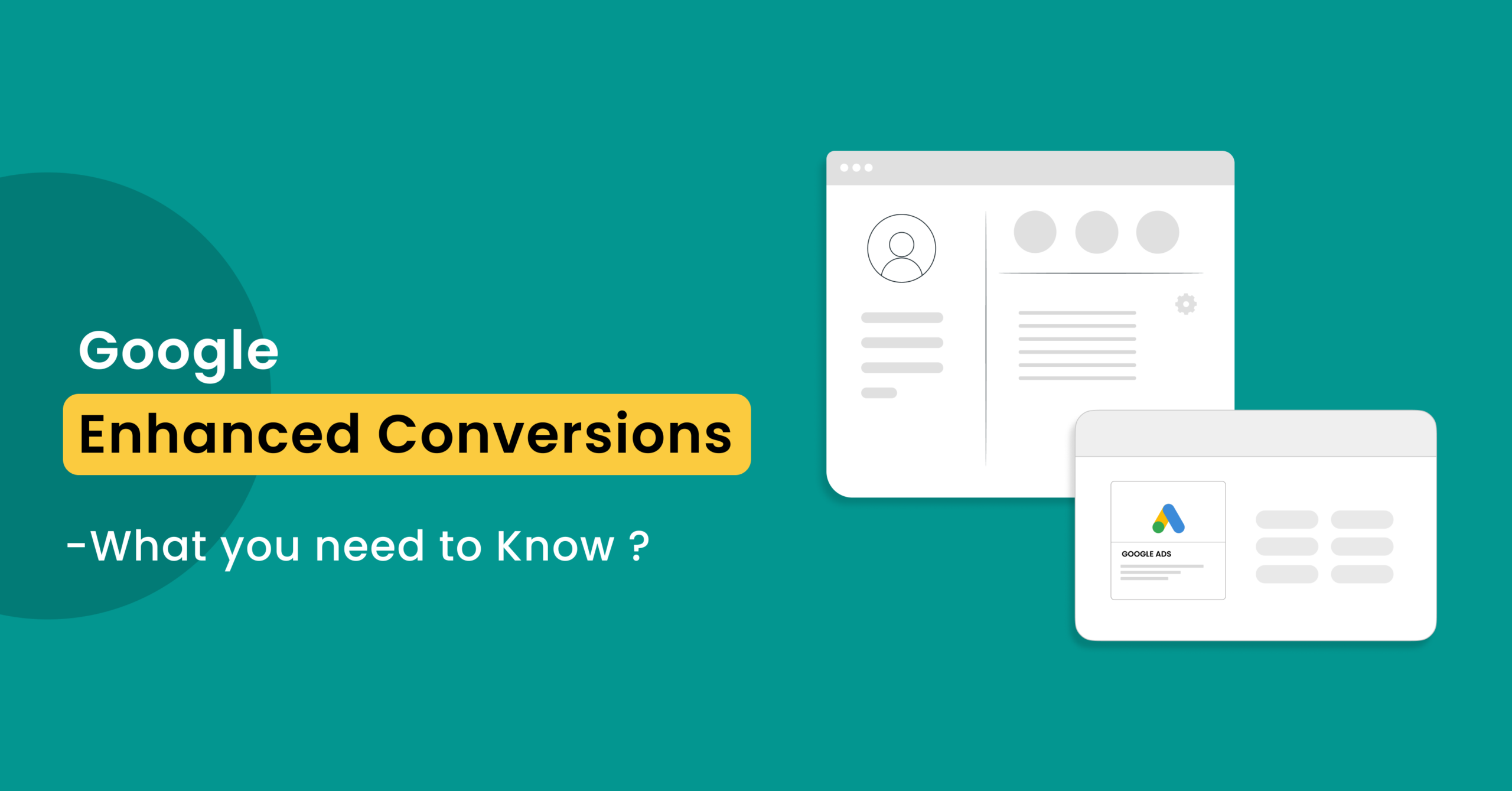Are you training your ad algorithms with real-world offline data?
If not, you’re having a serious problem with your marketing strategy!
Because when you’re only capturing online interactions and neglecting the offline conversions that happen after the initial online engagement, you’re missing a crucial part of the customer journey. By sending offline conversion data (CRM/ POS) to Google Ads through Google offline conversion tracking, you enable Google Ads to train its ad algorithms more effectively, and increase the attribution. This will significantly enhance the performance of your ad campaigns.
As a marketer, offline conversion tracking can benefit you in many ways.
In this blog, we will explore the advantages of Google Ads Offline Conversion Tracking and how it can elevate the performance of your ad campaigns.
Advantages of Google Ads offline conversion tracking
1. Unlock conversion uplift: Increased conversions
Implementing offline conversion tracking allows for a more accurate number of conversions, which results in Google attributing the conversions properly, reflecting both online and offline sales. So automatically, you would notice an increase in conversions when you are sending the offline conversion data back to Google Ads.
2. Complete customer picture for Google
When you send offline conversion data to Google Ads, it helps Google understand your offline customers better. Since Google already has the online data, it can have a complete 360° view of your customers when receiving the offline data sent through offline conversion tracking. This allows Google to understand your customers more deeply, utilizing high-quality first-party data signals to optimize ad campaign performance.
3. Target with Precision: Reach the Right Audience
By sending your offline data with Google Ads, you’re essentially providing it with valuable insights into the traits and preferences of your offline customers as well. This means that Google can use this information to identify and target similar users who are more likely to convert.
Let’s say 100 users click your ad and out of them, 30 users convert offline. Now through offline conversion tracking, you send the data of the 30 offline conversions to Google and it can then target people similar to those offline conversions, effectively expanding its potential reach. This way, you can target and reach the right audience who are more likely to convert.
This is how when you set up offline conversion tracking in Google Ads, you improve the ad campaign’s targeting precision.
4. Acquire high-value customers
One of the best practices to implement offline conversion tracking is to assign value to the conversions while sending them to Google Ads. By assigning value to conversions, Google Ads gains insights into the value of each customer allowing it to distinguish between high-value and low-value customers. As a result, it can prioritize reaching out to customers who are likely to generate higher returns, ultimately helping your business acquire high-value customers.
5. Enhanced bidding algorithms
When you set up offline conversion tracking, Google will be able to train its algorithms with the data that contains conversion values, audience signals, and customers who are likely to convert. Google can then better understand the customers to target and how much to bid so that the bidding algorithms are well-trained to bid in a way that brings the most value to your business.
6. Optimized ad campaign performance
As you train the ad algorithm with the high-quality first-party offline data sent to Google Ads through offline conversion tracking, Google can leverage machine learning to target and find relevant customers. This will ensure your ad spend focuses on high-intent audiences.
As a result, your ad-budget efficiency is increased, thereby reducing your CPP(cost per purchase) and CAC(customer acquisition cost). This further results in a noticeable improvement in your ROAS(return on ad spend). These all ultimately result in significantly optimized campaign performance.
Getting started with Google Ads offline conversion tracking…
Now that we’ve explored the numerous advantages of Google Ads Offline Conversion Tracking, let’s see how you can get started with this.
The old way: OCI using GCLID
Initially, Google introduced Offline Conversion Import (OCI) along with a guide known as OCI Helper. This relied heavily on the Google Click ID (GCLID), which is a unique identifier appended to URLs when a user clicks on a Google Ad.
However, with the increasing privacy regulations, especially following Apple’s App Tracking Transparency (ATT) updates, utilizing the GCLID has become challenging.
As a result, the landscape of offline conversion tracking is evolving, and advertisers need to adapt to these changes to ensure efficient tracking and optimization of their ad campaigns.
Introducing the new way – Enhanced conversions for leads
In response to the privacy regulations and the restrictions to GCLID, Google has introduced Enhanced Conversions for leads.
Using this, you can track offline conversions using hashed first-party data provided by users when they submit forms or make purchases.
Implementing Google Ads Offline Conversion Tracking
There are three methods to set up Google Ads Offline Conversion Tracking:
- Google Tag Manager
- Google Tag
- Google Ads API(for those comfortable with coding)
Google Ads API is the recommended method for enhanced conversion tracking, but it typically requires developer assistance.
However, if you prefer to use Google Ads API but lack developer resources, there’s a simpler solution available: CustomerLabs 1PD Ops for offline conversion tracking.
With just a few clicks and without any coding knowledge, you can send your offline data directly into Google Ads. By leveraging this method, you unlock numerous advantages of offline conversion tracking mentioned above, allowing you to boost your ad campaign performance.
(Note: Check out this blog to know how to implement enhanced conversions for leads through CustomerLabs)
But why CustomerLabs 1PD OPs?
1. Easy integration
CustomerLabs 1PD OPs simplifies integration without the need for much developer assistance. You can seamlessly integrate various sources such as your website and CRM systems like Salesforce or HubSpot into CustomerLabs and get that data flowing into it. And from CustomerLabs, you can push the data into any ad platform, specifically Google Ads in our case.
2. Compliance with consent mode v2
Many marketers implement consent mode v2 for only online users and overlook offline data. In general, Google will not be able to use data that doesn’t contain consent parameters.
Through CustomerLabs 1PD OPs, you can collect consent parameters such as analytics_storage, functionality_storage, ad _storage, ad_user_data, and ad_personalization when you’re collecting the user’s data from your website. You can also connect your CRM in CustomerLabs. So when you send this offline data back to Google Ads, it will be sent along with the consent parameters.
3. Going beyond standard purchase event
CustomerLabs helps you to go beyond the standard purchase event and optimize the ad campaign for a particular category. For example, if you are selling laptops and phones in your store, and you want to boost your laptop sales, you can optimize the ad campaign specifically for the laptop purchase event.
You can also optimize your ad campaign based on AOV to get more high AOV purchases.
You can combine both category-based and AOV-based purchases to optimize your ad campaign for higher AOV purchases in a specific category.
Watch the below video to understand how it is done in Meta Ads. (The same can be replicated in Google Ads as well! Schedule a free demo call with our experts for more information.)
4. Complete customer journey with 1P cookie
CustomerLabs 1PD OPs offers you first-party domain tracking with 1P cookie. Usually, when a user visits your website via an ad, their user information like GCLID gets stored in a third-party cookie for only 7 days. If they return after the 7th day and make a purchase, the conversion might not get attributed to the original campaign.
CustomerLabs addresses this issue by implementing lifetime server-side cookies. This will ensure that the visitor’s information is retained across sessions, and that conversion is accurately attributed to that specific ad campaign.
This results in understanding the complete customer journey and leveraging it towards improving your ad campaign performance.
To sum it all up…
In conclusion, Google Ads offline conversion tracking offers numerous advantages for businesses seeking to optimize their marketing efforts.
By bridging the gap between online and offline actions, Google will understand the customer from all points through Google Ads offline conversion tracking.
Additionally, CustomerLabs provides a seamless way to implement offline conversion tracking to boost your offline conversions and ad campaign performance.







